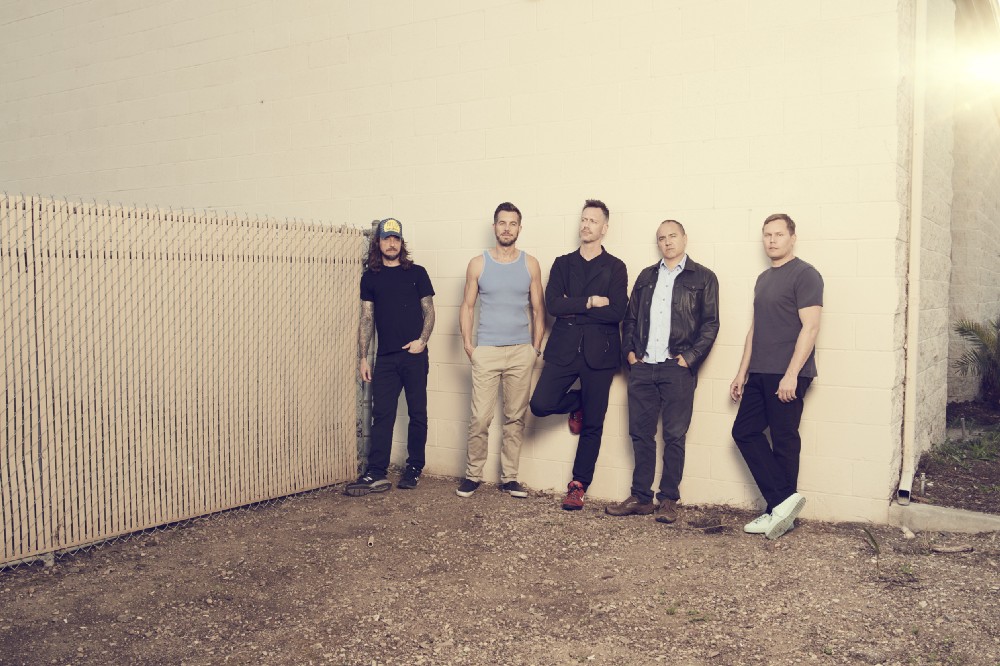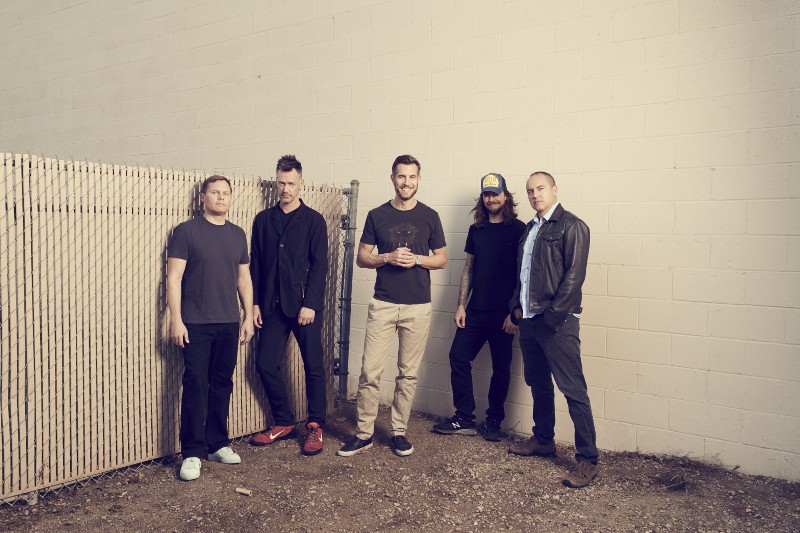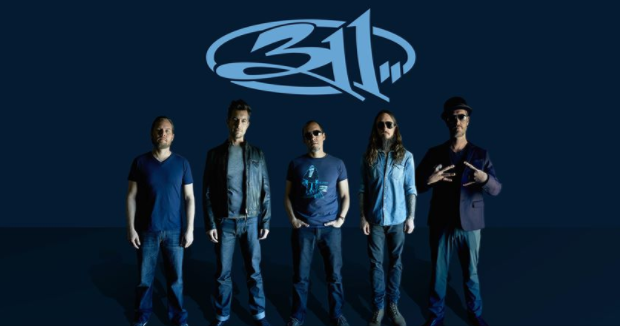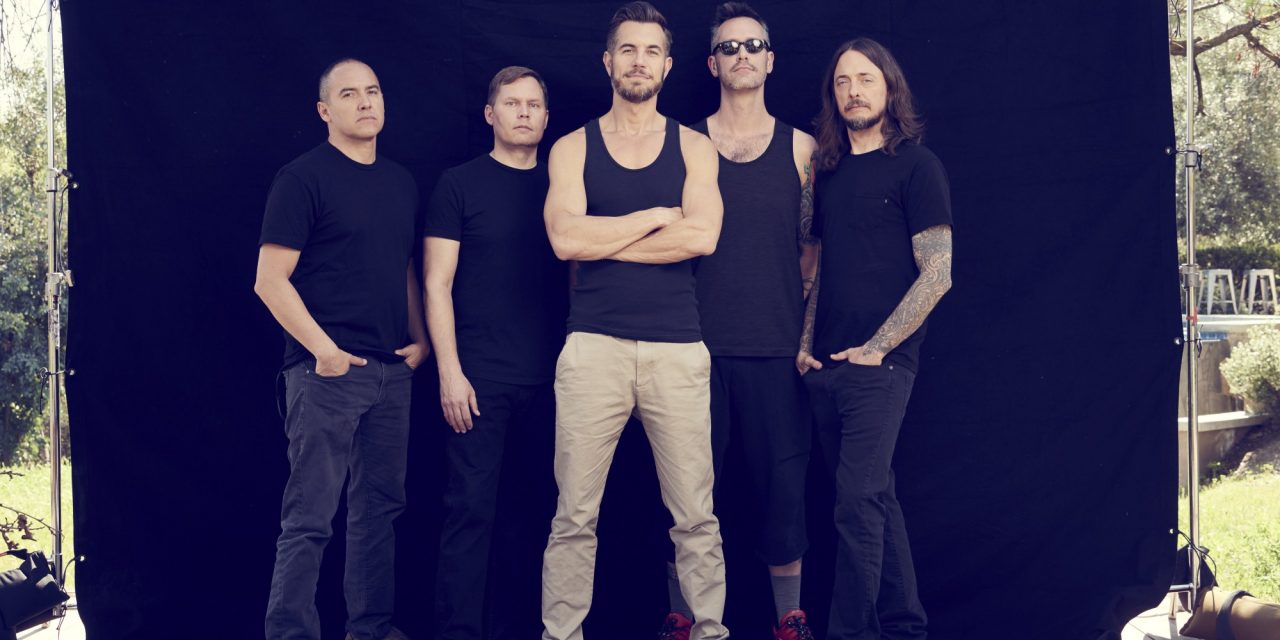Talking persistence, songwriting & 27 years strong with 311 frontman, Nick Hexum

Welcome to 311 week on Artist Waves.
311 recently celebrated 27 years strong all along — with all five original members. The band’s full ride is one of immense creativity and honesty, that ultimately has home-brewed a movement and way of life amongst their faithful hive. On Friday the 23rd, they release their 12th record, MOSAIC. In tribute and celebration, we have one unique feature per day.
Part 5: The grand finale on MOSAIC release day. As the 18th consecutive Summer Unity tour kicks off, we interview frontman, Nick Hexum.
311 — practicing what they preach:

“It’s about being persistent and getting back after it, whatever your goals are in life. That’s 311’s attitude.”
After 27 years, and now your 12th official record, what is a new release like for you?
Somehow 311 stays hungry. Moral is high, excitement is high. The fact that we’ve stayed under the radar and never got over-saturated has helped us have that kind of longevity and steady presence. The metric I’m most proud of is our longevity. To have the same lineup of band members and so many fans that have been with us all these years is incredible. It’s not about how many record sales you have all at once, it’s about how long you can do what you love to do.
I know this record is such a step forward and our fans are really going to love it. I’ll definitely interested in hearing the feedback from people. It’s been years in the making and it’s such an exciting buildup to the drop of the record. Like our music, there are so many builds and drops. You can hear it on certain songs, then you have that release which is more of a modern style. There’s an analogy for how that makes you feel musically and on a bigger scale, that we are experiencing on a buildup to the drop of our album.
Are all 17 songs on MOSAIC relatively new? When did they come together?
Stereolithic was more a of clearing house of demos. Some of them dating back eight years. We cleaned out the closet on that record and for this one, everything was written specifically for the album. “Wildfire” and “Places That the Mind Goes” were the first two for this session. The last songs written were the John Feldmann collaborations like “Too Much to Think”, “On a Roll”, “Til the City’s on Fire” and “Perfect Mistake”.
For you as a songwriter, do you need to be in a certain space to properly write? Where did you write the bulk of these songs?
Ideas do drop out of the sky and you have to be ready to put them down. I said it in rap about 10 years ago in the song “Wake Your Mind Up”, “Inspiration it comes and goes. You can bet when it hits, I’m on the phone singing to my voice mail trying to get it down”. I used to have little ideas and I didn’t have a recorder so I’d call my voicemail and sing or do a rap into my voicemail. I do a lot of that stuff still. I’ll hear a snippet of something then my brain twists it and it works its way into my subconscious mind. I also have to have intensive times, I can’t just rely on that. I have to sit down with a pad and paper and turn everything off. “Too Much to Think” was like that. I had the title. It’s a phrase that had a whole story behind it. Everyone can relate with having too much on your mind. John Feldmann and I sat down with acoustic guitars, a pad and pen and cranked it out in under an hour.
Did you have any of those gems out of the sky that happened for you in a new way this time around?
There were no unusual settings, but I did have some collaborations. I’ve made a lot of songwriter friends around L.A. Many of them happened organically. It was like a blind date. For a while I was co-writing or writing songs for other people, so I met a lot of people. I’d call them up and say, “Let’s put something together. Maybe it’s 311, maybe it’s not. Let’s just see what happens.” A lot of good stuff came out of that.

I love the line in “Too Late” where you say, “at the end of the day the relentless always win.” That’s a very powerful song.
It’s the slow and steady wins the race. It’s about being persistent and getting back after it, whatever your goals are in life. That’s 311’s attitude. We don’t expect any big break, we just expect to go out and do our best — going on tour, and putting on the best live show that we can. There are a lot of little other roles that we have that we keep working towards. I noticed that particular lyric has resonated so far. The metaphor, “the river cuts its way through stone not through sheer force but persistence,” is something a lot of people have related with before the record has come out. I’m seeing people make artwork out of it. It’s a theme we stuck to from our first album. “The fish that keeps on swimming is the first to chill upstream,” from Music, is one people really clicked with too. That was just me just sharing my own world view of what I personally work towards. Even with struggles, an artist has to be honest.
One of things I’ve always admired is that even though you have themes of unity and staying positive, you are also not afraid to address challenges. Life can be hard and you have to take it on. Often the attitude you mentioned is what carries you through.
I’ve always loved somebody who has the guts to shine a light on their own insecurities. You take John Lennon for example. He was so revealing and raw. There’s a similar vibe in “Places That the Mind Goes.” On one level it sounds like a love song, but it’s also talking about insecurities — when I don’t hear from you, the places that my mind goes. It’s not necessary a pleasurable thing. I really enjoy songs like that. It’s important to not over-edit yourself. Leave the embarrassing things in there. People can relate.
What were your biggest inspirations in writing this record? Were there any specific topics that you made an effort to tap into?
The song “On a Roll” is a good example. There’s such a simple repetitive melody in there. It’s like a soccer chant or what you hear at a football game. It sounds like a fight song to get you fired up. It’s about our band and our fan base. “ ‘Til the City’s on Fire” is a total party song. It’s about the old days when we would go out, fire all engines at once and explode into space. The topics on the record are all over the place. Old school 311 songs did not have much a theme. They didn’t have a stream of consciousness. People could piece it together. I didn’t even know what I was saying, there was no cohesive concept where you can grab something out of it that would speak to you. More and more as we go on, we’d talk the lyrics out as a group and they develop as more of a theme, whereas in the early days it was more of me sitting down by myself. I used to take my Sony discman, go to the park and write lyrics to other people’s music. I’d put on De La Soul and then write a rap. At a certain point you run out of things to say. I’ve moved more and more towards collaboration.

MOSAIC is a very diverse record. There are a bunch of different styles with roaring melodies. Was there a strong focus on melody regardless of the song structure?
Yeah. If it’s catchy to me, it will be catchy to other people. One of the tricks that I do is that I will listen to a demo that I’ve made first thing in the morning. I’ll let it play once just to get the music in my head. Then I’ll do some household chores. Things will then start percolating in my head. That’s one of the ways you can get catchiness, if it keeps subconsciously going over-and-over in your head. You capture it, then you can bring it to the studio and flush it out.
“Perfect Mistake” for example. SA’s “h’oh” to start the chorus makes such a difference. It’s a little piece, but it really opens things up.
To go from more of a staccato, busy, rhythmic vocal, and then change it to really long notes in the chorus, feels like sweet relief. “Take it Easy” by the Eagles for example. The whole verse is really fast. It can almost be rap, but then when you get to the chorus, it’s so soothing to change from short notes to long notes. That’s why “Perfect Mistake” has that soothing feeling, you are changing from a rap to a long note that allows your brain to settle in. It’s less of new information and more of a primal sing-along. I think John Feldmann did a great job working on the song and integrating little tricks. The way he would have us enunciate just the right amount. He would say, instead of saying “oh” put a little “h” on there and make it “h’oh”. It makes it feel more of a primal scream that SA totally kicked ass on.

Who came up with the fan photo idea for the album cover? It’s a very powerful concept and foundation for the record.
I have to give our managers credit for having the idea of a mosaic cover. The title came out of that. They sent us an email that said, “mosaic cover.” I said to myself, “Oh, mosaic cover, that’s a title right there.” It’s really a perfect metaphor for what we are — a picture made up of a lot of different pictures, both in our fan base and all these different people that make up our community. As we get into our 27th year, it’s really becoming clear what a special thing it is. Stylistically, 311 is a mosaic from all these different influences that come together to form a distinct 311 sound. It’s all a metaphor for what’s great about America, these different cultures and sounds. Somehow it all works. We love the diversity. MOSIAC was a perfect nod to that.
My longtime friend, Brian Smith, took the photo then it’s basically a computer algorithm that takes a bunch of small photos and turns it into a larger photo. Our managers did all the heavy lifting of compiling the 10,000 photos then putting into this program that turns it into this other image just by using the colors and the shading.
Was the community and fan concept going to be part of this record regardless of the album art?
It evolved organically. You go on the 311 cruise for example; you see all these people having the times of their lives and you see how they interact with each other. On costume night I dressed up as a ninja and walked around. Nobody knew it was me so I got to experience the inside of the 311 fan base. To see how cool everybody was to each other was very inspiring.
How will the new music impact your sets on this upcoming tour?
Last summer was an off-album year so we would go towards older stuff and deep cuts. Now the fans are excited to hear these new songs live and we are excited to play them. We’ll lean heavily on playing them live. People will want to hear the classics as well. That’s the art of the art — making a setlist each night. We have a band meeting after soundcheck each day, people suggest songs and we hammer it out. It’s a nice bonding hang for us.
Do you foresee any of the new songs being openers or closers?
I don’t know. The first time we played “Too Late” was on the cruise. The screaming of delight after we got done with it was pretty exciting. Now we know that one will be a burner live. The more chill songs take a while to grow into. We didn’t start playing “Amber” until that album had already been out a year. I remember we debuted it in Cleveland.

Now with the album out and the tour kicking off, what does MOSAIC mean to you?
Diversity. That’s what I love about the word MOSAIC and the cover. Musically, 311 is at its best when we have this wild creativity that will allow you to put whatever you want in a song and let your imagination run. You take a song like “Wildfire” that goes through so many different movements, I think that’s just a unique 311 experience. I have tons of excitement for people to hear this record. Hopefully it will move them the way it moved us to make it.
Catch 311 on tour now. For dates/ticket info visit: 311.com/shows
Artist Waves’ 311 week:
Part 1 — Interview with Pnut
Part 2 — The inspiration of 311 in 10 stunning lyrics
Part 3 — How 311 Changed My Life, by: 311 fans
Part 4 — Ted Bowne, of Passafire, the excitement of touring with 311
If you enjoyed, please recommend by clicking the heart below
In collaboration with/produced by Jeff Gorra
Follow Artist Waves on: Facebook, Twitter & Medium
~ follow Jeff Gorra | twitter @JeffGorra |JeffGorra@ArtistWaves.com



